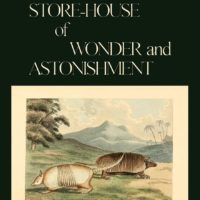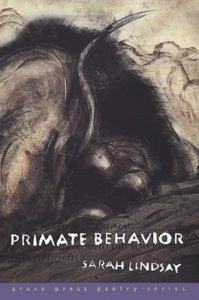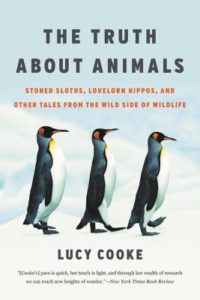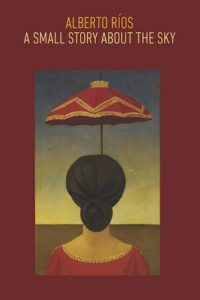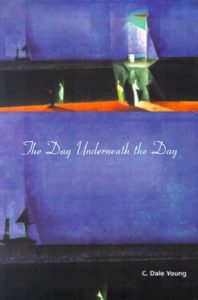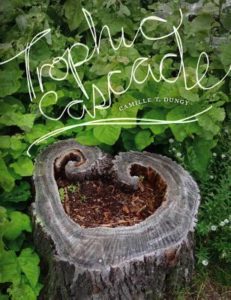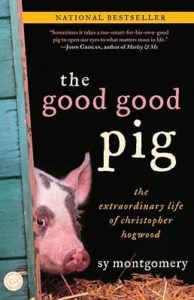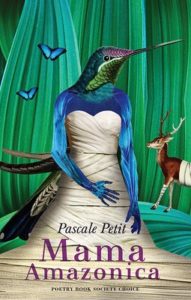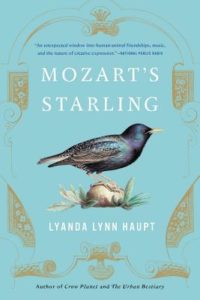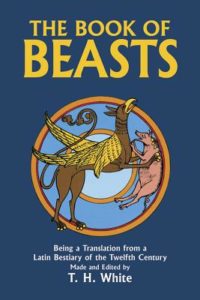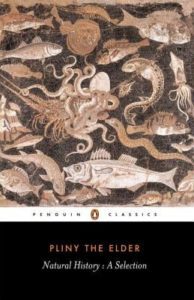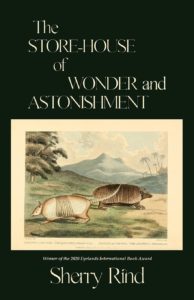In one of Jane Goodall’s early books, there’s a photo of two chimpanzees sitting on a height watching the sun set. Are they enjoying the colors the way we do? Scientists warn us not to anthropomorphize because it’s a kind of arrogance to assume we know what another species thinks and feels. Fortunately, we can imagine, as we’ve been doing ever since looking at the pictures in Peter Rabbit. Beatrix Potter, by the way, was an expert naturalist and scientific illustrator, but she couldn’t get employment as such, being a lowly female.
If the natural world counts as anything not man-made, then it’s easy to step into it physically. Even a city park has birds, bugs, and trees. But to feel like you’ve escaped the concrete, you employ imagination, even if unconsciously. If birdsong drifts by and your mind goes “bird,” that’s a simple connection. Usually, we want to go further.
In earlier centuries, people did not hesitate to make assumptions about animals. This was both good and bad: good because of the colorful writings that resulted but bad in that they believed, as too many people still do, that we are separate from and have dominion over the natural world and a right to its riches. They set great value on some animals for their powers and curative properties but then used them without compassion as if the animals couldn’t feel pain. But they also believed animals could form intentions, a belief that didn’t come around again until the late 20th century, thanks, in part, to Jane Goodall.
When imagining the natural world, you are breaking through barriers between inside and outside, not only those of a building but also inside-outside your mind. You may also be breaking through the false construct that we matter more to this world. What goes on inside you—the way you choose to imagine what’s here or far away in place or time—is an expansion, a becoming part of it.
More than one scientist has presented evidence that chimpanzees do feel awe, as we do, concluding that it’s a genetic built-in. We are not the apex species, though we are the most destructive, and the natural world does not belong to us or exist to serve our needs. The books I’ve listed remind us of our kinship, not separation, as they both satisfy and stimulate hungry imaginations.
***
Primate Behavior by Sarah Lindsay
The subject matter of Lindsay’s poems ranges from cave paintings to outer space. Can you see a title like “Lungfish Conquers Depression” and resist reading the poem? Another connects a stage magician with spinning galaxies and our need to imagine. The boldness and range of these poems set an example for stretching my own imagination. There’s also a poem about the Hatcher expeditions to Patagonia in 1896-99. Seemingly impassive, numbered sections hint that Hatcher appreciates what he sees. I wanted to see Patagonia and the Strait of Magellan after researching and writing about the round-the-world voyage. Although I went there before the Covid shut-down, Lindsay’s poem brought out yet another Patagonia.
The Truth About Animals by Lucy Cooke
Richard Dawkins endorses this one as “Well informed and downright funny.” You could also subtitle the book “Everything you never imagined about animals but that people used to.” Cooke investigates thirteen animals, the sloth being a favorite, and delves into past error while giving a thorough account of present knowledge. For instance, beavers were once hunted for their testicles and were thought to escape hunters by castrating themselves. However, Cooke explains that the actual prize was a pair of anal sacs wanted for the supposed curative powers of their very smelly secretions. The more powerful the stink, the better the medicine. Because some of the wildest claims were in the name of science, just as our “enlightened” discoveries may be looked upon in the future, the book acts as both entertainment and a source of appreciation for what we have yet to learn.
A Small Story About the Sky by Alberto Ríos
Ríos is a favorite for creating vivid images that bloom in the mind. His poems are deceptively straightforward, language moving logically, each like a small story but with a punch at the end. He’s also playful, smashing the barrier of anthropomorphism but never sentimental. In the poem “Winter Lemons” the lemons might have climbed the trees “for sport,/ Liking the dare.” This is imagination that breaks conventional rules. As you move through the book, you realize everything is alive; everything, in its own way, has agency: “Saguaros award everyone a touchdown.”
The Day Underneath the Day by C. Dale Young
Like William Carlos Williams, to whom the book begins with an homage, C. Dale Young is both MD and poet (and editor and teacher). I first read Young’s poetry over fifteen years ago, and this first book remains a favorite because it takes me to Jamaica and Florida where he grew up. “[T]he flora, the white sand, the escape” along with sea and sky form the natural world in these poems. That world becomes a necessary background and influence for human stories, whether history in the form of Spanish conquest, his childhood, or himself as an adult revisiting and remembering his grandmother: “What was [important], she said, was how the sea/always took care of its own.”
Trophic Cascade by Camille T. Dungy
My favorite poems in this well-known book are ones like “Glacial Erratics,” which begins with a small domestic scene and expands in one surprising image after another, moving to the ocean and life-giving properties of its inhabitants. When the poem moves back to mother and daughter, the pushing of birth becomes a metaphor for the rest of life. Personal history becomes family history still entangled with the movement of the present. Much of the book alternates between types of Ars Poetica and the questions frequently asked of a new mother, but all of them reference the natural world as image, simile, and metaphor. Of the rapid changes of an infant: “She will take a step/ and the tide that fills the tide pools will come in.”
The Good Pig by Sy Montgomery
I chose this out of Montgomery’s many books about observation of and contact with animals because it’s about an animal that’s anything but exotic. People who keep pigs as pets keep little ones. Christopher Hogwood grew from sickly runt too small for the slaughterhouse to 750 pounds, and he involved an entire community in his care and feeding. Like many people’s, my community has been limited lately. This book offers a vicarious experience of the enjoyment of interacting with everyone in town. And you’ll learn about pigs, their personalities, and their smarts.
Mama Amazonica by Pascale Petit
The tropical rainforest is abused endangered; it’s a place of danger; it’s a woman’s mind, a mental hospital, life itself. These poems are not about experiences; they are the experience, and none more so than Petit’s surrealistic depiction of her mother’s mental illness and her relationship with her mother. In “Rainforest in the Sleep Room” you are both in the Amazon rainforest and in the mother where “The highway goes through/ the Amazon’s brain/ like an ice pick through an eye socket.” In another poem, the mother is a jaguar. You will find jaguars recurring throughout the book. Scarlet Macaws “want to take their place/ with the quetzal and the jaguar” in a forest that has been taken from them. These are poems that will strike you, hard.
Mozart’s Starling by Lyanda Lynn Haupt
Members of the Corvid family, European starlings are an incredibly successful invasive species in the USA. Most of us dislike them, including Haupt, a nature writer, until she adopted and raised a baby starling in Seattle. The book tells of caring for the chick, a crazy-making experience if you’ve ever done it, as I have, starting with feedings every two hours, far more difficult than with a human infant when a woman can just pop open her shirt. Fortunately, a starling grows up fast, and soon gets into trouble around the house. Writing about starlings as a species, Haupt segues smoothly into the well- researched story of Mozart and his pet starling, were he found it and why, its possible place in his life. Starlings can imitate human speech; notes of music are even easier for them. Where Haupt needs to speculate about history, her scenarios make sense.
Bestiary Dark by Marianne Boruch
A fierce look at beauty and horror. For a complex book of wild imagination, try Marianne Boruch’s latest, based on her time in Australia just before the fires from which the land may never recover. I first noticed it because, like me, she brings Pliny the Elder into her book, in her case addressing him personally. You can see the parallels between world-ending events in Australia and Pliny’s Pompeii. Through this book, you visit Australian landscape and wildlife before the fires but with the foreknowledge of what is to come, making the moment even more significant. Here’s Boruch as starfish: “I’m grim. I’m beautiful. As the world.”
The Book of Beasts translated by T.H. White
White’s translation of a Latin bestiary, first published in 1954, is still in print. I love this and other bestiaries for their fantasy, despite their mind-boggling Christian lessons, which were taken very seriously at the time. I have no compunction about laughing at them. This edition is not in color like the originals, but even in black and white the drawings are as worth seeing as a graphic novel. Originally only the educated read the book; the illiterate enjoyed the artwork. Each animal becomes a moral fable, such as: The wolf’s “eyes shine in the night like lamps because the works of the devil are everywhere thought to seem beautiful and salubrious by darkened and fatuous human beings.” Still true, though I have a different idea of whom that devil and his fatuous followers are. Read bestiaries for a while and you develop a sympathy, not necessarily for the lessons, but for the magic of the world.
Natural History by Pliny the Elder
You could call this The Encyclopedia of Everything because his goal was to write down all human knowledge. It’s available in book form—many volumes—but the Perseus website’s 19th century translation by Bostock and Riley provides it free, readable, and easily searchable. Although he copied a lot from Aristotle because everyone copied from everyone else for centuries, he added his own commentary about the stories he collected. Beginning with the divine nature of the earth, he recorded information about animal, mineral, and vegetable along with the weird remedies you can derive from them. A random click can get you to stories about dolphins who loved humans. They always came to a bad end. For something uplifting, read about floating forests of oak trees holding each other up, linked by their roots. Read for a while Pliny’s combination of fact weighted equally with the fantastic and you’ll find the world you see out a window is overlaid with the possibilities that imagination brings.
To close out this list, we have included Sherri’s new collection, The Store-house of Wonder and Astonishment, out now from Pleasure Boat Studio — Ed.
The Store-house of Wonder and Astonishment by Sherry Rind
Following natural history writings from Aristotle to Darwin, The Store-House of Wonder and Astonishment celebrates the combination of discovery and error passed along for nearly two thousand years. Into this mix comes the repressive influence of the Church on scientific thinking, followed by European colonial attitudes in the New World. But underlying the sense of superiority over people as disparate as Jews, the Irish, and indigenous tribes was the everlasting human yearning for wonder in the natural world with its creatures both real and imagined.
